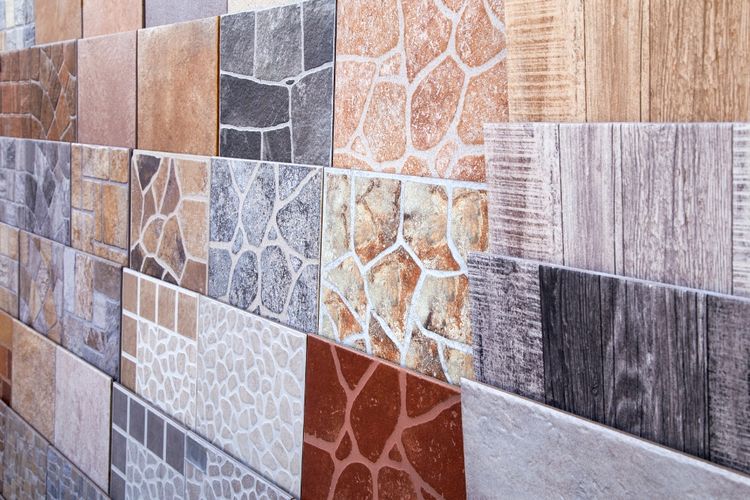Trompe l'Oeil Textures: Optical Illusions in Home Design
The world of interior design is witnessing a captivating renaissance of trompe l'oeil techniques, bringing depth, intrigue, and artistic flair to modern living spaces. This age-old art form, which literally means "deceive the eye" in French, is making a triumphant return, transforming flat surfaces into three-dimensional masterpieces. From faux marble countertops to illusionary bookcases, trompe l'oeil is redefining the boundaries between reality and illusion in our homes.

In the 20th century, trompe l’oeil fell out of favor as modernism embraced clean lines and minimalism. However, the technique never truly disappeared, finding a niche in theatrical set design and occasional use in postmodern architecture. Today, we’re witnessing a resurgence of trompe l’oeil in home design, driven by advancements in digital printing, innovative materials, and a renewed appreciation for artisanal craftsmanship.
Modern Applications: From Subtle to Spectacular
Contemporary trompe l’oeil applications range from subtle enhancements to bold statement pieces. One popular trend is the use of faux texture wallpapers that mimic natural materials like wood, stone, or fabric. These high-quality prints offer the look of expensive finishes without the cost or maintenance issues associated with the real materials. Designers are using these wallpapers to create accent walls, add visual interest to ceilings, or even transform entire rooms into immersive environments.
Another innovative application is the use of trompe l’oeil in furniture design. Tables with printed marble tops, cabinets with faux wood grain, and chairs upholstered in fabric printed to look like leather are just a few examples. These pieces allow homeowners to enjoy the aesthetic of luxury materials while staying within budget and often choosing more sustainable options.
Digital Trompe l’Oeil: The Next Frontier
The digital revolution has ushered in a new era for trompe l’oeil in home design. Advanced projection mapping technology allows for the creation of dynamic, changeable illusions on walls, floors, and ceilings. Imagine a dining room that transforms from a Tuscan villa to a Parisian café with the flick of a switch, or a bedroom ceiling that displays a realistic night sky complete with twinkling stars.
Augmented reality (AR) applications are also pushing the boundaries of what’s possible with trompe l’oeil. Homeowners can now use AR apps to preview how different trompe l’oeil designs would look in their space before committing to installation. This technology not only aids in decision-making but also opens up possibilities for temporary or seasonal trompe l’oeil elements that can be changed as desired.
The Psychology of Optical Illusions in Living Spaces
The resurgence of trompe l’oeil in home design isn’t just about aesthetics; it’s also rooted in the psychological impact of our living environments. Studies have shown that our surroundings significantly affect our mood, productivity, and overall well-being. Trompe l’oeil techniques can be used to create the illusion of more space in small rooms, add a sense of whimsy to children’s spaces, or create calming environments in bedrooms and bathrooms.
Designers are increasingly using trompe l’oeil to address specific spatial challenges. For example, in urban apartments with limited natural light, faux windows with printed landscapes can create a sense of openness and connection to nature. In basement rooms, ceiling murals depicting sky scenes can alleviate feelings of being underground.
Sustainable Illusions: Eco-Friendly Trompe l’Oeil
As sustainability becomes a central concern in home design, trompe l’oeil offers an eco-friendly alternative to resource-intensive materials. Instead of harvesting rare woods or quarrying stone, designers can use printed surfaces that mimic these materials with startling accuracy. This approach not only conserves natural resources but also reduces transportation emissions associated with heavy materials.
Moreover, the longevity of well-executed trompe l’oeil designs means less frequent redecorating and waste. Unlike trendy wallpapers or paint colors that may quickly feel dated, a high-quality trompe l’oeil mural or texture can remain timeless and adaptable to changing decor styles.
DIY Deception: Accessible Trompe l’Oeil for Homeowners
The democratization of design tools and techniques has made trompe l’oeil more accessible to homeowners and DIY enthusiasts. Online tutorials, specialized paints, and pre-made stencils allow individuals to experiment with trompe l’oeil techniques in their own homes. From creating faux brick walls to painting realistic shadows to add depth to flat surfaces, these projects offer a creative outlet and a way to personalize living spaces.
However, experts caution that successful trompe l’oeil requires a solid understanding of perspective, light, and shadow. For complex designs, it’s often best to consult with a professional artist or use high-quality pre-made products to ensure the desired effect is achieved.
The Future of Trompe l’Oeil in Home Design
As we look to the future, the possibilities for trompe l’oeil in home design seem boundless. Advancements in materials science are producing ever more realistic textures and finishes. Meanwhile, the integration of technology is blurring the lines between physical and digital reality in our homes.
We may soon see smart surfaces that can change their appearance on demand, adapting to our moods or the time of day. Holographic projections could create three-dimensional trompe l’oeil effects that interact with the physical space in new and exciting ways.
The resurgence of trompe l’oeil in contemporary home design is more than just a trend; it’s a rediscovery of the power of illusion to transform our living spaces. By blending traditional artistic techniques with cutting-edge technology, designers are creating homes that are not just functional, but truly magical. As we continue to push the boundaries of what’s possible in interior design, trompe l’oeil stands as a testament to the enduring human desire to dream, create, and reimagine the world around us.




